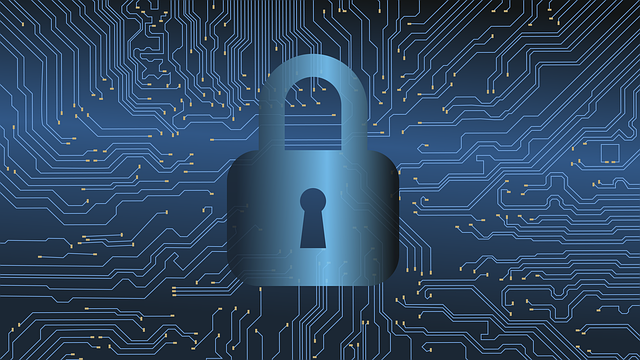As a small or medium-sized business (SMB), you are entrusted with handling confidential information about your customers. Processing payments and marketing may mean you store credit card data and email and physical addresses in your systems. But what happens if your business’ security is compromised and records fall out of your hands into the wrong ones? The type and amount of information released can range from minor to catastrophic, but for you and your customers, any breach is a major issue. For the sake of both your customers and your business, what comes next?
Here are some information and tips to help you recover from a data breach.
What is a data breach?
A data breach occurs when sensitive or confidential information is leaked from an organization. This can be intentional or accidental. A hacker intentionally stealing privileged information or an insider leaking data constitutes a data breach just as much as a mistaken release of information or a lost company thumb drive does.
The two kinds of information most often stolen in a data breach are personally identifiable information and financial data.
What can you do to recover from a data breach?
In the event of a data breach, take immediate action to minimize data loss and the damage it can cause, including:
- Seek help from an IT professional. They may tell you to turn off your computers or leave them on, but follow their advice so that they will be able to investigate.
- Don’t destroy evidence from the breach.
- Make the required notifications. These depend on the laws of your location but will likely include law enforcement and your customers.
- Remove any hacked content or improperly-posted information from your website.
- Determine how the breach happened –and make sure that it doesn’t happen again. Work with your IT solutions provider to secure your network and systems.
Recovering your reputation after a data breach
Taking steps to secure your business technology after a data breach is important, but so is repairing your reputation with your customers who may have been affected in the breach. Fortunately for grocers, c-stores, liquor stores, and other merchants, customers are most likely to return to a retail company that has experienced a data breach, compared to other businesses such as hotels, social media sites, and rideshares. Varonis research found that 42 percent of consumers will shop at a retail store after a data breach, vs. only 20 percent who will continue to do business with a hotel, 14 percent that will keep using a social media site, and 7 percent that will use a rideshare business again. How you handle a data breach, however, is critical in regaining the trust of your customers.
- Promptly alert your customers as to what has happened. The sooner you do, the better they will be able to act to protect their personal information that may have been compromised.
- Be transparent in letting people know what you have changed and what steps you are taking to prevent future data breaches.
- Train your employees in new security protocols and in identifying potential threats.
Start thinking now about your recovery plan
While ideally, your business will never have to go through this process, it is important to take steps now to consider how to recover from a data breach. The time to figure out a plan is not in the midst of a crisis — it is before. Being proactive about your security and recovery plans will leave you better prepared to save your business and its reputation.
If you need to talk through your risks and the measures you can put in place to protect your business, contact PlazSales.
To help pizzeria owners, pizza point of sale (pizza pos) is more than just a cash register or adding machine — it’s a hub where you can manage your entire business.
Pizza shops have long managed their business in the traditional, manual manner. Much like pizza itself, why stray too far from what has worked? This may mean using pen and paper to order ingredients, taking down orders over the phone. You may be using a non-integrated payment system to swipe credit cards. But that means workflows that take extra time through a shift and at the end of the day. Modern customers want the convenience of online ordering and payment. And like customers always have, they still expect prompt service and their food served warm and tasty as ever.
With Pizza POS, you can streamline your operations to reduce waste. It’s a win for everyone: The more efficiency you can build into your business, the more successful you will be at keeping your customers and employees happier.
Pizza POS Features
Point of sale systems for pizzerias are unique among those for other restaurants and businesses because pizzerias are a different kind of operation. Pizzas are almost endlessly customizable in a way that other restaurants are not expected to deal with. How big of a pie does a customer want? Which certain toppings only go on which certain halves? It’s easy for a mix-up or misunderstanding to occur when relaying these orders verbally and recording them manually. Better to have a system that is designed and optimized for these specific kinds of orders.
Pizza POS systems need to give your business these capabilities:
- Modify options for size and toppings on pizzas. When the menu changes, the system can easily adapt as well.
- Inventory management that lets you know exactly what you have, how much you use, so you never run out of ingredients while reducing food waste.
- Online ordering to suit busy customers’ schedules and for added convenience.
- Delivery management to provide your delivery drivers with directions and constant traffic updates to get them where they need to be on time. You can also let your customers know when their delivery is dispatched so they aren’t left guessing.
- Loyalty program features to keep your customers coming back by rewarding them for doing so. The right pizza POS system will allow you to digitally manage your customer accounts and rewards with ease.
- Customer relationship management (CRM) that allows you to optimize your sales and marketing campaigns, forecast future sales, and automate simple digital features to leave your staff more time for complex tasks.
- Integrated payments — no longer take that extra time at the end of the day to do your payment reports.
- Offline mode for business continuity, even if your network connection is interrupted
- Reporting that provides you with visibility into what your customers are ordering, their preferred methods of payment, the times the rush comes in, and track labor hours and employee performance.
Just What You Ordered
In this day and age, pizzerias face steep competition and small profit margins. To keep operating while making a profit, you need the ability to operate efficiently and build a base of loyal customers. When it comes to optimizing your business, in all specifics unique to pizzerias, pizza POS can help.
To learn more about point of sale systems that help pizzerias run efficiently and profitably, contact PlazSales.
For more tips, information, and insights, subscribe to our blog. It only takes a few seconds to subscribe by entering your email address.


Recent Comments